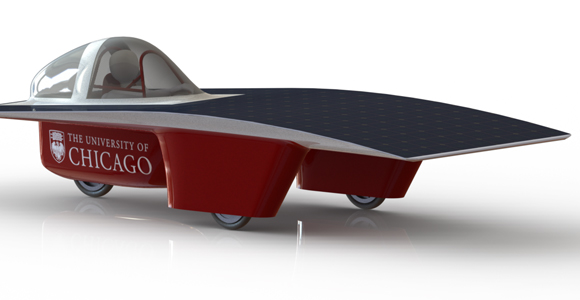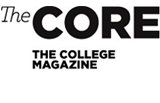
club news
A race in the sun
The University of Chicago solar car team hits the road.
Edited and condensed by Claire Zulkey
In 2011 Kevin Wang, ’14, founded the University of Chicago Solar Car team. The team’s first serious goal: taking a car to Austin this June for the American Solar Challenge Formula Sun Grand Prix. The team has received backing from Student Government, Wells Fargo, and Adams Foam Rubber (and is still accepting sponsors and donations). The Core caught up with two members during spring quarter.
With no engineering classes at UChicago, how do you learn how to build a car?
Wang: We either find it online or talk with suppliers and sponsors, who have been really helpful. We tell them we need a part, and they’re like, “Oh, what exactly do you need?” And we’re like, “We don’t know!” They help us go through the process so we learn how to build a battery from scratch or how to manufacture a rim.
What parts do you make from scratch versus taking off other vehicles?
Wang: I guess we can take anything, but we want to build something for the experience. The suspensions we’re buying off the shelf; we’re taking ours from a snowmobile we bought at a parts store. But a lot of it is custom stuff. You can’t buy a battery like the one we need. It’s too much power. The rims are special made.
What is the team currently working on?
Katie Leu, ’14, public relations manager: Today some of our members are going to a facility where BIR Training, one of our sponsors, is teaching us how to mill the rims for the wheels. Right now the wheels are giant round hunks of aluminum.
Where will you test the car?
Leu: We haven’t really thought about that. It probably shouldn’t be allowed on local roads. It might move too slowly.
In September you got your own garage at 56th and Cottage Grove.
Leu: It’s been helpful because before we were storing things under somebody’s bed when we didn’t have enough space.
Wang: Now we’re storing a lot of foam there that we’re using to mold our body. We take a positive mold and then take fiberglass, push it against the mold, and let it harden. Then you can take it off and you get a car body.
Have you had any safety issues?
Wang: We had some fun experiences with the battery. We had to weld a small circuit onto each of 450 cells, each one with about the power of a AA battery. So you can imagine 450—that’s a lot of power. When we’re welding them and accidentally short circuit, or the welder finds an air gap between the contact surface and the cell, it’ll blow a hole through the contact surface with a really loud bang. With 450 cells, it gets repetitive, so if you hit one and you get the loud bang, you’re like, “Whoa!”
What is the atmosphere like at a solar car race?
Wang: We stopped by the American Solar Challenge last year to say hi and talk to other teams. We got a lot of pictures, which is where our design came from. We combined a lot of the other cars. It’s competitive but very friendly. Other teams will actually help build other cars.
Why did you name the car Angstrom?
Wang: It’s a unit of measurement: 1.0 × 10-10 meters. We wanted a name that represented something around solar power that wasn’t used by another team and that represented the UChicago spirit.
That’s rather nerdy.
Wang: Yeah, that’s the UChicago spirit.
